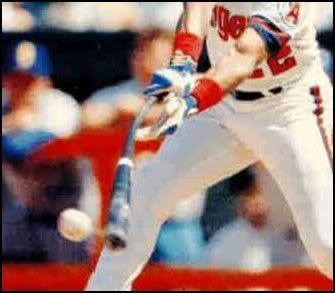quote:
Academia brought us the pronouncements that curve balls do not actually curve and batted baseballs do not travel more than 500 feet.
Q- yeah, I don't really remember that, but I know it started in about 1877... and then was debunked, again, in the 40's... thank goodness that now, in 2009, we have better technologuy than we did in the 1870's and 1940's... ummm Magnus effect... we all get that now Q..
Fortunetly, through TODAYS technology, we were able to analyze over 15,000 Major League swings at 4,000 frames per second... everyone of them, 100%, the woodbat didn't "whip" back until after contact and the length of time to the "whipping back" in youth bats was even longer....
The whole reason a bat bends is inertia... the only reason it would "whip back" in line with barrel, is because of deceleration of hands..... just like the only reason you would get jolted to dash of car is by slamming on brakes....
so feel free to teach your hitters to try and time that "whip back" while trying to hit a baseball. Should make for a fun summer...



